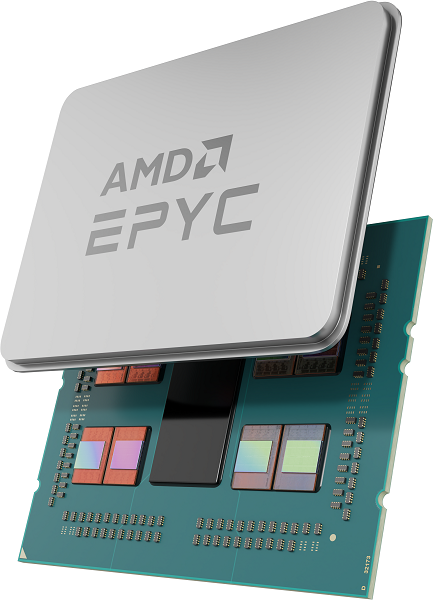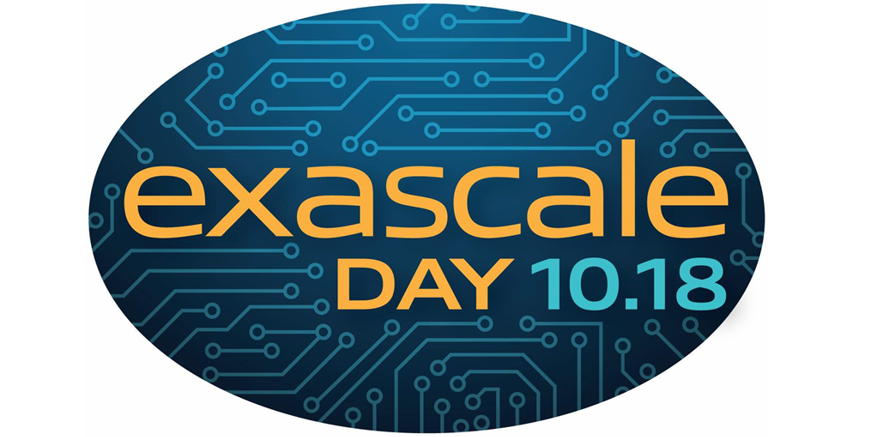 Seeking to continue on its market share eating roll in the data center server chips sector, AMD announced GA of what the company said is the world’s first data center CPU using 3D die stacking, the 3rdGen AMD EPYC with AMD 3D V-Cache technology, formerly codenamed “Milan-X.”
Seeking to continue on its market share eating roll in the data center server chips sector, AMD announced GA of what the company said is the world’s first data center CPU using 3D die stacking, the 3rdGen AMD EPYC with AMD 3D V-Cache technology, formerly codenamed “Milan-X.”
Initially announced last November and built on the “Zen 3” core architecture, the chips deliver up to 66 percent performance uplift for technical computing workloads versus comparable, non-stacked EPYC chips, according to AMD.
“These new processors feature the industry’s largest L3 cache, delivering the same socket, software compatibility and modern security features as 3rd Gen EPYC CPUs,” the company said, “while providing outstanding performance for technical computing workloads, such as computational fluid dynamics(CFD), finite element analysis (FEA),electronic design automation(EDA)and structural analysis.”
AMD stressed that cache size increases have been at the forefront of performance improvement, particularly for technical computing workloads relying on large data sets. While these workloads benefit from increased cache size, 2D chip designs have physical limitations on the amount of cache that can effectively be built on the CPU, the company said. “AMD 3D V-Cache technology solves these physical challenges by bonding the AMD ‘Zen 3’ core to the cache module, increasing the amount of L3 while minimizing latency and increasing throughput. This technology represents an innovative step forward in CPU design and packaging and enables breakthrough performance in targeted technical computing workloads.”

According to AMD:
- EDA –The16-core, AMD EPYC 7373X CPU can deliver up to 66 percent faster simulations on Synopsys VCS compared to the EPYC 73F3 CPU.
- FEA –The 64-core, AMD EPYC 7773X processor can deliver, on average, 44 percent more performance on Altair Radioss simulations compared to the competition’s top of stack processor.
- CFD –The 32-core AMD EPYC 7573X processor can solve an average of 88 percent more CFD problems per day than a comparable competitive 32-core count processor, while running Ansys CFX. These performance capabilities ultimately enable customers to deploy fewer servers and reduce power consumption in the data center, helping to lower total cost of ownership (TCO), reduce carbon footprint and address their environmental sustainability goals.
For instance, AMD said, in a typical data center scenario running 4600 jobs per day of the Ansys CFX test case cfx-50, using 2P 32-core AMD EPYC 7573X CPU-based servers can reduce the estimated number of servers required from 20 to 10 and lower power consumption by 49 percent, when compared to the competition’s latest 2P 32-core processor-based server. This ends up providing a projected 51 percent lower TCO over three years. AMD said a 3rdGen AMD EPYC processors with AMD 3D V-Cache in this deployment would have the environmental sustainability benefit of more than 81acres of US forest per year in carbon sequestered equivalents.
“Customers’ increased adoption of data-rich applications requires a new approach to data center infrastructure. Micron and AMD share a vision of delivering full capability of leading DDR5 memory to high-performance data center platforms,” said Raj Hazra, SVP/GM of the Compute and Networking Business Unit at Micron. “Our deep collaboration with AMD includes readying AMD platforms for Micron’s latest DDR5 solutions as well as bringing 3rdGen AMD EPYC processors with AMD 3D V-Cache technology into our own data centers, where we are already seeing up to a 40% performance improvement over 3rdGen AMD EPYC processors without AMD 3D V-Cache on select EDA workloads.”
AMD said Microsoft Azure HBv3 virtual machines (VMs)have now been upgraded to 3rdGen AMD EPYC with AMD 3D V-Cache technology. According to Microsoft, HBv3 VMs are the fastest adopted addition to the Azure HPC platform ever and have seen performance gains of up to 80 percent in key HPC workloads from the addition of AMD 3D V-Cache compared to the previous HBv3seriesVMs.
The new processors are available today from OEM partners, including, Atos, Cisco, Dell Technologies, Gigabyte, HPE, Lenovo, QCT, and Supermicro. The chips are also broadly supported by software ecosystem partners, including, Altair, Ansys, Cadence, Dassault Systèmes, Siemens, and Synopsys, according to AMD.




